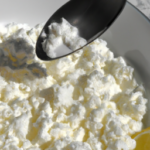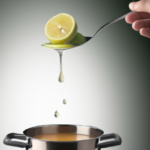Juice Tips and Tricks
How To Make Mozzarella Cheese With Lemon Juice
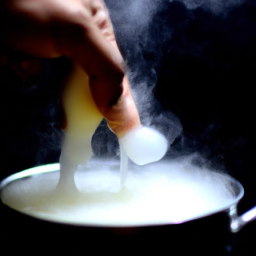
Have you ever wanted to make your own mozzarella cheese but found the process intimidating? Fear not, cheese lovers, because I have discovered a simple and delicious way to make mozzarella cheese using lemon juice.
It may seem like an unlikely pairing, but the acidity of the lemon juice helps to curdle the milk and create the perfect texture for this classic Italian cheese.
Picture yourself in a quaint Italian village, surrounded by rolling hills and fields of grazing cows. The sun is shining and the air is filled with the sweet aroma of freshly made cheese.
Now, bring that image back to reality and let me show you how to recreate that experience in your own kitchen with just a few ingredients and some simple steps. With this recipe, you’ll be able to impress your friends and family with your homemade mozzarella cheese, and they’ll never believe how easy it was to make.
So, let’s get started on this cheesy adventure!
Key Takeaways
- Gradually adding lemon juice is important for even curdling
- Straining the curds using cheesecloth is common
- Kneading the cheese creates a smooth, elastic texture
- Cheese should be chilled in the fridge to firm up and enhance flavor
Gather Your Ingredients
You’ll need to gather all the ingredients for making mozzarella cheese with lemon juice before you can start creating the perfect cheese. Once you’ve collected your supplies, including fresh milk, lemon juice, and rennet, you’re ready to begin the cheesemaking process. It’s essential to ensure that your lemon juice is freshly squeezed for optimal results, although learning how to juice a papaya might come in handy for other culinary adventures. With everything prepped, you can follow the steps carefully to create a delicious batch of homemade mozzarella.
Firstly, you need to choose the right type of milk for your cheese. The best milk to use is fresh, whole milk, as it contains the necessary proteins and fats needed for the cheese to form properly. However, you can also use lower-fat milk options like 2%, or even non-dairy milk alternatives like soy or almond milk for a vegan option.
Next, you’ll need to select the right type of acid for the cheese-making process. While lemon juice is the most popular option, you can also use other acids like vinegar or citric acid. It’s important to note that using different acids can affect the final taste and texture of the cheese. For example, lemon juice can give your cheese a slightly tangy flavor, while vinegar can make it more tart.
With your milk and acid selected, you’re ready to move on to the next step: heating the milk.
Heat the Milk
Once the milk is on the stove, crank up the heat and wait for it to start bubbling. It’s important to choose the right type of milk for cheese making. Whole milk is the best option as it contains the right amount of fat and protein needed for mozzarella cheese. However, you can also use low-fat or skimmed milk if that’s all you have.
When heating the milk, you should use specific heating techniques to ensure that the milk doesn’t burn or scorch. The best way to do this is to use a double boiler or a heavy-bottomed pot. This will distribute the heat evenly and prevent the milk from sticking to the bottom of the pot. Keep stirring the milk occasionally to avoid burning.
Once the milk reaches a temperature of around 85-90 degrees Celsius, it’s ready for the next step of adding the lemon juice.
Now that the milk has reached the desired temperature, it’s time to add the lemon juice.
Add the Lemon Juice
Now it’s time to add the lemon juice to the heated milk. I’ll gradually pour in the lemon juice while stirring the mixture continuously. It’s important to stir the mixture thoroughly to ensure that the lemon juice is evenly distributed throughout the milk.
Adjust the paragraph structure in the Input to logically group complete sentences on their own lines, with a double new line after. Use contractions.
Gradually Add the Lemon Juice
As you add the lemon juice, the milk will begin to curdle, transforming into the delicious mozzarella cheese you crave. It’s important to add the lemon juice gradually, as adding too much at once can cause the curdling process to happen too quickly and result in a less-than-ideal texture. Using lemon juice as the acid for cheese making is just one option, as other acids like vinegar or citric acid can also be used. Additionally, there are various techniques for shaping the cheese into different forms, such as stretching and molding into balls or braids.
To ensure that the curdling process happens evenly and smoothly, I like to use a table to measure out the lemon juice and slowly pour it into the milk. In a 2 column and 3 row table, I measure out the lemon juice in one column and the corresponding amount of milk in the other column. Then, I pour in a small amount of lemon juice at a time, stirring gently between each addition until the milk has fully curdled. This technique helps me achieve the perfect texture for my mozzarella cheese every time.
With the lemon juice added, the next step is to stir the mixture to distribute the acid evenly.
Stir the Mixture
To evenly distribute the acid throughout the mixture, I’ll want to give it a good stir. Think of it like mixing up a salad dressing – just like I want all the ingredients to blend together smoothly, I’ll want to make sure the acid is evenly distributed throughout the curds.
There are different ways to stir the mixture, and each method will produce different results. Here are some alternative stirring methods that I’ve found to be effective:
-
Use a whisk: This is a great option if you want to break up the curds and incorporate the acid quickly. Whisking will create small curds and a firmer cheese.
-
Use a spoon: This method is slower, but it will produce larger curds and a softer cheese. Use a large spoon to gently stir the mixture, making sure not to break the curds too much.
-
Use your hands: If you’re feeling adventurous, you can use your hands to knead the curds and distribute the acid. This method requires a bit more effort, but it can produce a very smooth and creamy cheese.
It’s important to stir the mixture for a longer period of time if you want a firmer cheese. The longer you stir, the more the curds will come together and the more whey will be expelled. This will result in a cheese that is less moist and more compact. However, if you prefer a softer cheese, a shorter stirring time is recommended.
Once the curds have been stirred to your desired consistency, it’s time to move on to the next step: straining the curds.
Strain the Curds
To strain the curds, I use a cheesecloth that I’ve soaked in hot water to make it sterile.
I lay the cheesecloth over a colander set over a large bowl, and pour the curds and whey into the cheesecloth.
Then, using my hands, I gently squeeze out the excess liquid from the curds.
Use a Cheesecloth
Don’t forget to grab a cheesecloth to help strain the curds from the whey! Using cheesecloth is a common way to strain the curds from the whey. The cheesecloth allows the liquid to pass through while retaining the solid curds.
However, it’s important to note that using cheesecloth has its pros and cons. One advantage of using cheesecloth is that it’s widely available and affordable. Additionally, there are different types of cheesecloth that can be used for making cheese, such as cotton or muslin.
However, a potential downside is that the cheesecloth can sometimes tear or break during the straining process, which can result in a mess and loss of curds. To prevent this, make sure to use a high-quality cheesecloth and handle it with care.
Now that the curds have been strained using the cheesecloth, it’s time to squeeze out the excess liquid.
Squeeze Out the Excess Liquid
Once the curds have been strained and separated from the whey, it’s time to gently squeeze out any excess liquid using a clean cloth or paper towel. This step is crucial to removing moisture from the cheese and achieving the desired texture.
To do this, I take a cheesecloth and wrap the curds tightly, squeezing out any remaining liquid. I use a technique where I twist the cheesecloth at the top of the curd and gently apply pressure to release the liquid. I continue to do this until the cheese has reached the desired moisture level.
It’s important not to over-squeeze the cheese, as this can result in a dry and crumbly texture. Once the excess liquid has been removed, I move on to shaping the cheese into a ball using the cheesecloth.
Shape the Cheese
Now that I’ve strained the curds, it’s time to shape the cheese.
The first step is to add salt to taste, which’ll enhance the flavor and also help preserve the cheese.
Then, I need to knead the cheese to create a smooth, elastic texture that’ll hold its shape.
Add Salt to Taste
Sprinkle a pinch of salt onto the creamy curds, allowing the flavor to meld perfectly with the tangy lemon juice. The amount of salt to add depends on personal preference, but about a teaspoon per pound of cheese is a good starting point. You can experiment with different types of salt to see what works best for your taste. Some popular options include sea salt, kosher salt, and Himalayan pink salt.
If you want to add some extra flavor to your mozzarella cheese, you can also mix in some herbs such as basil or oregano. Simply chop up the herbs finely and sprinkle them over the cheese before shaping it. This will give the cheese a delicious and aromatic taste that pairs well with a variety of dishes.
Once the salt and any additional ingredients have been added, it’s time to move onto the next step: kneading the cheese.
Knead the Cheese
After adding the salt and herbs, it’s time to get your hands dirty and knead the curds until they become smooth and stretchy. Kneading is a crucial step in the process of making mozzarella cheese, as it helps to develop the cheese’s texture and flavor.
Here are some tips for kneading cheese:
- Use a gentle touch: While kneading, it’s important to be gentle with the cheese. Avoid squeezing or pressing too hard, as this can cause the curds to break apart and result in a grainy texture.
- Stretch the cheese: To develop the cheese’s stretchiness, gently pull and stretch the cheese with your hands. This helps to align the proteins within the cheese and create a smooth, elastic texture.
- Work quickly: Kneading should be done quickly, as the cheese will become more difficult to shape and stretch as it cools. Keep this in mind and work efficiently to ensure that the cheese develops properly.
Variations of kneading techniques exist, so experiment with different methods to see which one works best for you.
Once the cheese has been kneaded to your satisfaction, it’s time to move on to the next step: heating the cheese.
Heat the Cheese
Alright, now that we’ve shaped the cheese, it’s time to heat it up.
First, I’ll grab a pot and fill it with water. Then, I’ll bring the water to a boil on the stove.
Once the water is boiling, I’ll gently submerge the cheese into the pot and allow it to heat up for a few minutes.
Boil Water in a Pot
First things first, let’s get the water boiling in a pot to start our mozzarella cheese-making journey. Boiling water is an essential step in making cheese as it helps to sterilize the water, making it safe for use and preventing the growth of harmful bacteria. Using boiled water also helps to maintain the pH level of the milk, which is crucial in cheese-making. Unlike other methods of heating milk, boiling water heats the milk evenly, ensuring that the cheese has a smooth texture and consistent taste.
To boil the water for cheese making, follow these simple steps:
- Fill a large pot with enough water to cover the cheese.
- Place the pot on a stove and set the heat to high.
- Wait for the water to come to a rolling boil, with large bubbles breaking the surface of the water.
- Turn off the heat and let the water cool down for a few minutes before submerging the cheese.
Use a thermometer to measure the temperature of the water, which should be around 80-85°C for best results.
With the water boiling and ready, let’s move on to the next step of submerging the cheese in the water to start the cheese-making process.
Submerge the Cheese in the Water
To submerge your cheese in the boiling water, carefully lower it into the pot using a slotted spoon or ladle while gently stirring the water to ensure even heating. You can also use other liquids like whey or vinegar to submerge the cheese, but water is the most common and easy to use. The texture of the cheese may vary depending on the liquid used.
If you use water, the cheese will have a slightly firmer texture, while using whey will result in a softer, creamier texture. On the other hand, using vinegar will make the cheese more tangy and acidic.
Once the cheese is submerged in the water, let it sit for a few minutes until it reaches a temperature of 170°F. You can use a thermometer to check the temperature. Once it reaches the desired temperature, use the slotted spoon or ladle to remove the cheese from the water and place it on a plate.
Now it’s time to stretch the cheese.
Stretch the Cheese
Now that the cheese is heated and ready, it’s time to stretch it. To handle the hot cheese, I always make sure to wear gloves for protection.
Then, I begin stretching the cheese, pulling it apart until it’s smooth and shiny. This process is crucial for achieving the desired texture and flavor of the mozzarella cheese.
Use Gloves to Handle the Hot Cheese
Before handling the hot cheese, make sure to put on some gloves to avoid burning your hands. Wearing gloves has several benefits when working with hot cheese.
First, it protects your hands from the high temperature of the cheese, which can cause serious burns. Second, it helps prevent the cheese from sticking to your hands, which can make it difficult to stretch and shape the cheese properly.
If you don’t have gloves available, there are a few alternatives to using gloves for handling hot cheese. One option is to use a damp cloth to protect your hands from the heat. Simply wet the cloth with cold water, wring it out, and then use it to handle the cheese. Another option is to use a pair of tongs or a spatula to move the cheese around. However, keep in mind that these tools may not provide as much control or precision as gloves.
Now that you have protected your hands with gloves or alternative methods, it’s time to stretch the cheese until it is smooth and shiny.
Stretch the Cheese Until It is Smooth and Shiny
As you stretch the warm, gooey cheese, it will gradually become smoother and shinier under your skilled hands. This step is crucial to achieving the perfect texture for your homemade mozzarella cheese. To stretch the cheese, you will need to use a combination of stretching techniques, including the fold and pull method and the spinning method. The goal is to create a smooth, elastic texture that will give your cheese the signature stretchy quality it’s known for.
To help you perfect your stretching technique, here is a handy table outlining the different methods you can use:
| Stretching Technique | Description |
|---|---|
| Fold and Pull | Fold the cheese over itself and pull the ends apart, then repeat. |
| Spinning | Hold the cheese in both hands and spin it like a wheel, stretching as you go. |
Remember to work quickly while the cheese is still warm and pliable. Once it cools down, it will become harder to stretch and shape. Once you’ve achieved the desired texture, move on to the next step of chilling the cheese.
Chill the Cheese
You’ll want to give your cheese some time to cool off in the fridge until it’s as cool as a cucumber. Cooling the cheese is an essential step in the cheese-making process. Not only does it help the cheese firm up, but it also enhances its flavor.
Here are some tips for chilling homemade cheese:
- Wrap it tightly – to prevent any air from getting in and drying out the cheese.
- Place it in a container – to protect it from any moisture or odors in the fridge.
- Let it cool off completely – this could take a few hours or overnight, depending on the size of your cheese.
- Store it in the fridge – this will help keep the cheese fresh for a longer period.
Different ways to use homemade mozzarella cheese in recipes include adding it to pizzas, sandwiches, pastas, salads, and more. Now that your cheese is chilled, it’s time to move on to the next step – storing the cheese.
Store the Cheese
To keep your homemade mozzarella fresh and delicious, it’s important to store it properly. There are a few storing methods that you can try, depending on how long you plan to keep the cheese.
If you’re planning to consume it within a few days, you can wrap it tightly in plastic wrap and store it in the refrigerator. Be sure to change the plastic wrap every day to prevent moisture from building up and turning your cheese into a soggy mess.
If you’re planning to keep your mozzarella cheese for longer than a few days, you can store it in a brine solution. To make the brine solution, dissolve 2 tablespoons of salt in 2 cups of water. Once the solution has cooled, place your cheese in a clean jar and pour the brine over it, making sure that the cheese is completely submerged. Your homemade mozzarella cheese stored in a brine solution can last up to 2 weeks in the refrigerator.
Now that you know how to store your homemade mozzarella cheese, it’s time to enjoy it! Whether you’re using it to make a delicious homemade pizza or adding it to your favorite pasta dish, your homemade mozzarella cheese will add a fresh and delicious flavor to any meal.
Enjoy Your Homemade Mozzarella Cheese!
Now it’s time to savor your fresh, homemade mozzarella and add a burst of flavor to any of your favorite dishes! Here are some ways to use your homemade mozzarella cheese:
- Top off your homemade pizza with freshly grated mozzarella cheese.
- Add some slices of mozzarella to your favorite sandwich or panini.
- Sprinkle some crumbled mozzarella on top of a garden-fresh salad.
- Melt some mozzarella on top of your favorite pasta dish for a creamy and delicious finish.
While making mozzarella cheese with lemon juice is a fun and rewarding process, it can sometimes result in a texture that is not as firm as store-bought cheese.
Here are some tips for improving the texture of your homemade mozzarella cheese:
- Make sure to use whole milk, as it contains more fat and will result in a firmer cheese.
- Be sure to heat the milk to the correct temperature and use a good quality rennet for optimal results.
- Stretch and knead the cheese for a longer period of time to encourage a firmer texture.
- Store your cheese in a brine solution to help maintain its shape and texture.
By following these tips and experimenting with different ways to use your homemade mozzarella cheese, you can enjoy a delicious and satisfying culinary experience!
Frequently Asked Questions
How long does homemade mozzarella cheese last?
On average, homemade mozzarella cheese lasts about a week when stored properly in the refrigerator. To extend shelf life, wrap in plastic wrap or store in an airtight container. Avoid freezing, as it can alter the texture.
Can I use other types of citrus juice instead of lemon juice?
Yes, other citrus juices can be used to make mozzarella cheese, but acidity levels must be considered. Lime juice has a higher acidity and can result in a tangier flavor, while orange juice has lower acidity and a sweeter taste.
Can I make mozzarella cheese with non-dairy milk?
Non dairy alternatives can be used to make mozzarella cheese. Health benefits include lower cholesterol and lactose intolerance. Technical precision is necessary to achieve the right texture and flavor. Allusion to the satisfaction of creating your own cheese.
What can I do with the leftover whey from making mozzarella cheese?
I often use the leftover whey from cheese-making in recipes such as smoothies, soups, and bread. It’s high in protein, vitamins, and minerals. Try searching for whey recipes online for more ideas on how to use it.
Do I need any special equipment to make mozzarella cheese at home?
To make mozzarella cheese at home, Cheese Cloth Alternatives like muslin cloth or a clean cotton shirt can be used. Rennet can be substituted with vinegar or lemon juice. Special equipment like a thermometer and a large pot is required.
Conclusion
So there you have it, my step-by-step guide on how to make delicious mozzarella cheese using lemon juice. It may seem daunting at first, but with practice, it becomes easier and more enjoyable each time.
Did you know that the average American consumes about 23 pounds of cheese each year? That’s a lot of cheese! But why settle for store-bought when you can make your own fresh mozzarella cheese right at home? Not only is it more cost-effective, but it also allows you to control the quality and flavor of your cheese.
Remember to always use high-quality ingredients and to follow the steps carefully for the best results. With a little patience and practice, you’ll be able to impress your friends and family with your homemade mozzarella cheese.
So go ahead, give it a try and enjoy the satisfaction of creating your own delicious cheese!
Susannah expertise lies in researching and compiling evidence-based content on juicing, nutrition, and overall health. She is committed to ensuring that The Juicery World offers accurate, up-to-date, and trustworthy information to empower readers to take control of their health. Susannah’s goal is to inspire individuals to embrace juicing as a way to nourish their bodies and live their best lives.
Juice Tips and Tricks
How to Make Aloe Vera Juice Taste Better

Tired of the strong flavor of aloe vera juice? No problem, we’ve got the answer for you.
In this article, we’ll share some tips and tricks to make your aloe vera juice taste better. We have tried and tested various methods to enhance the flavor without compromising the health benefits.
From choosing the right juice to adding natural sweeteners and infusing with fruits and herbs, we’ve got all the information you need to transform your aloe vera juice into a delightful and refreshing beverage.
Let’s dive in!
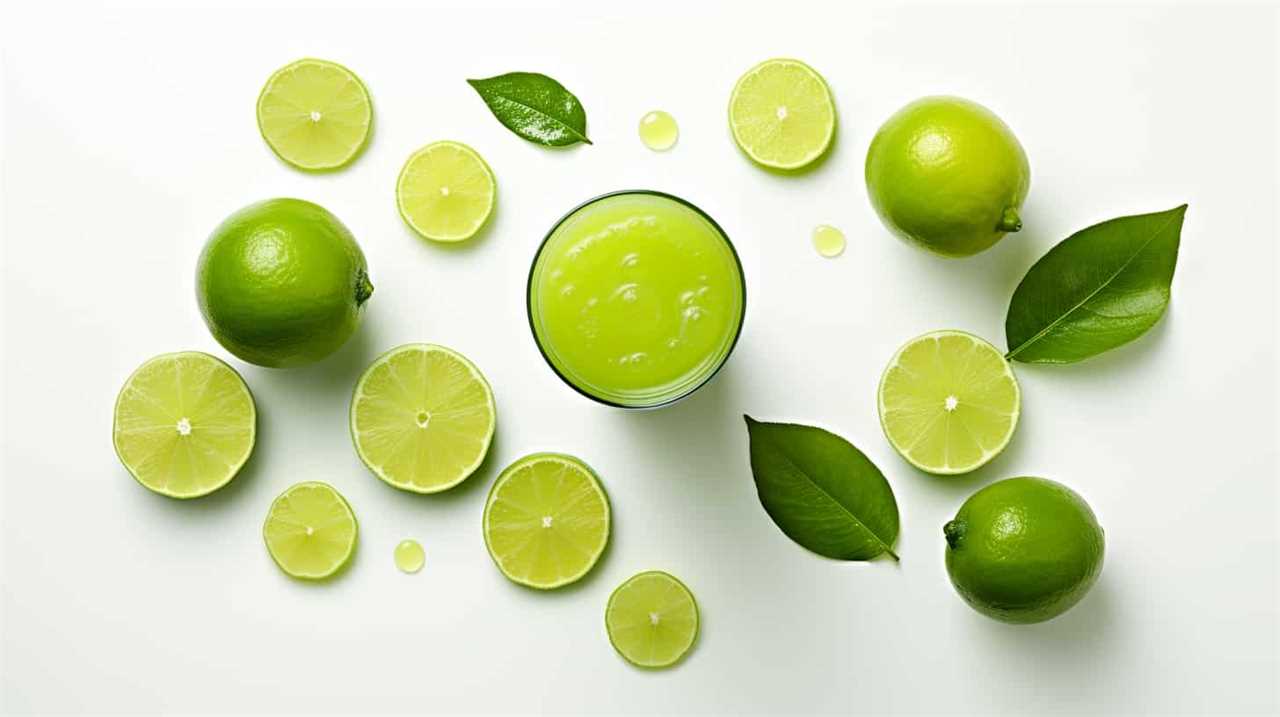
Key Takeaways
- Choose a reputable brand of aloe vera juice that prioritizes quality and uses organic, pure aloe vera.
- Avoid brands that contain added sugars or artificial ingredients.
- Use natural sweeteners like honey, agave syrup, or stevia to enhance the taste of aloe vera juice.
- Experiment with adding fruits, herbs, and other juices to create unique flavor combinations and enhance the health benefits of aloe vera juice.
Choosing the Right Aloe Vera Juice
We can enhance our experience with aloe vera juice by selecting the right brand and type for our preferences. When it comes to finding a reputable brand, it’s important to do some research and read reviews from other consumers. Look for brands that prioritize quality and use organic, pure aloe vera without any added sugars or artificial ingredients. Understanding the health benefits of aloe vera juice is also crucial in making the right choice. Aloe vera is known for its soothing properties, aiding digestion, promoting skin health, and boosting the immune system. By choosing a high-quality brand, we can ensure that we’re getting the maximum benefits from our aloe vera juice.
Now that we know how to choose the right brand, let’s move on to the next step of adding natural sweeteners.
Adding Natural Sweeteners
To enhance the flavor of our aloe vera juice, we can add natural sweeteners such as honey or agave syrup. Using alternative sweeteners not only adds sweetness but also brings unique flavors to the juice. Here are some options to consider:
- Stevia: A natural sweetener derived from the Stevia plant, it’s a zero-calorie alternative to sugar.
- Maple Syrup: This natural sweetener adds a rich and earthy flavor to the aloe vera juice.
- Dates: Pureed dates can be used to sweeten the juice while also providing essential nutrients like fiber.
In addition to using alternative sweeteners, we can enhance the flavor of aloe vera juice by adding spices and extracts. Cinnamon, ginger, or vanilla extract can add warmth and depth to the taste. By experimenting with different combinations of these natural sweeteners, spices, and extracts, we can create a flavor profile that suits our preferences.

Now, let’s move on to the next section and learn how to infuse aloe vera juice with fruits and herbs to further enhance its taste.
Infusing With Fruits and Herbs
As we explore ways to make our aloe vera juice taste better, one option to consider is infusing it with fruits and herbs. Creating unique aloe vera blends by adding fruits and herbs not only enhances the flavor but also adds a touch of freshness and complexity to the juice. For example, combining aloe vera juice with lemon, mint, or berries can create a refreshing drink that’s both delicious and packed with additional nutrients. It’s similar to the ease of making lemonade with bottled juice—quick, convenient, and customizable to suit your preferences. By experimenting with different fruit and herb combinations, you can elevate your aloe vera juice experience while still reaping its health benefits.
Fruits like strawberries, pineapple, or citrus can add a burst of sweetness, while herbs like mint, basil, or ginger can provide a subtle yet refreshing twist. Exploring the benefits of herbal infusions can also be beneficial for our health. For example, adding a few sprigs of lavender can promote relaxation and reduce stress. Additionally, infusing aloe vera juice with rosemary can aid digestion and boost the immune system.
Blending With Other Juices
Let’s try mixing aloe vera juice with different fruit juices to create delicious and refreshing blends. Blending aloe vera juice with other fruits not only enhances its taste but also adds nutritional benefits to your drink. Here are three fruit juices that you can mix with aloe vera juice:

- Orange juice: Combining aloe vera juice with orange juice not only adds a tangy flavor but also boosts your intake of vitamin C, which is essential for a strong immune system.
- Pineapple juice: Mixing aloe vera juice with pineapple juice creates a tropical blend that isn’t only refreshing but also helps in digestion. Pineapple contains bromelain, an enzyme that aids in breaking down proteins and promoting better digestion.
- Watermelon juice: Blending aloe vera juice with watermelon juice creates a hydrating and refreshing combination. Watermelon is rich in water content and contains electrolytes that can help replenish your body’s fluids.
Experimenting With Flavor Combinations
While we can try various flavor combinations with aloe vera juice, it’s important to find the right balance to enhance its taste. Experimenting with different flavors can’t only make the juice more enjoyable but also enhance its health benefits.
Aloe vera juice is known for its numerous health benefits, such as boosting digestion, promoting hydration, and supporting the immune system. By adding complementary flavors, we can create a refreshing summer drink that not only tastes great but also provides a nutritional boost.
Some popular flavor combinations include mixing aloe vera juice with citrus fruits like lemon or orange, adding a splash of coconut water for a tropical twist, or combining it with cucumber and mint for a refreshing and cooling effect.
Don’t be afraid to get creative and find the flavor combination that suits your taste buds best!

Frequently Asked Questions
Can I Use Store-Bought Aloe Vera Gel Instead of Fresh Aloe Vera for Making Juice?
Yes, you can use store-bought aloe vera gel instead of fresh aloe vera for making juice. However, it’s important to note that fresh aloe vera juice may have more health benefits due to its higher nutrient content.
How Long Can I Store Aloe Vera Juice in the Refrigerator?
Aloe vera juice can be stored in the refrigerator for up to a week. Refrigeration helps maintain the longevity and freshness of the juice, preserving its beneficial properties. It’s important to store the juice in an airtight container to prevent contamination and maintain its quality. Similarly, you might wonder *how long ginger juice lasts*; typically, fresh ginger juice can be refrigerated for about 1–2 weeks as well. Both aloe vera and ginger juices are best consumed within their shelf life to ensure maximum potency and health benefits. Additionally, freezing either juice can extend their shelf life, though some loss of nutrients and potency may occur during the process. When thinking about *how long fresh juice lasts*, it’s crucial to check for signs of spoilage, such as changes in smell, taste, or color, before consuming. To enjoy the best results, it’s always recommended to use fresh ingredients and properly store the juice to ensure you’re getting the most out of its health benefits.
Can Aloe Vera Juice Help With Digestive Issues?
Aloe vera juice can potentially help with digestive issues when taken in appropriate dosages. However, it is important to note that there may be potential side effects. It is always best to consult with a healthcare professional before starting any new supplement regimen.
Can I Use Artificial Sweeteners Instead of Natural Sweeteners in My Aloe Vera Juice?
Using artificial sweeteners in aloe vera juice may affect its taste and potential health benefits. However, natural sweeteners like honey or stevia can enhance the flavor without compromising its nutritional value.

Is It Safe to Drink Aloe Vera Juice Every Day?
Drinking aloe vera juice daily can have numerous benefits, such as improving digestion and boosting the immune system. However, consuming it regularly may also lead to potential side effects like diarrhea or stomach cramps.
Conclusion
In conclusion, making aloe vera juice taste better is easy and enjoyable.
By choosing the right aloe vera juice and adding natural sweeteners, infusing with fruits and herbs, blending with other juices, and experimenting with flavor combinations, you can create a delightful and refreshing drink.
So go ahead and unleash your creativity in the kitchen, and transform your aloe vera juice into a sensational elixir that will transport your taste buds to paradise.

Susannah expertise lies in researching and compiling evidence-based content on juicing, nutrition, and overall health. She is committed to ensuring that The Juicery World offers accurate, up-to-date, and trustworthy information to empower readers to take control of their health. Susannah’s goal is to inspire individuals to embrace juicing as a way to nourish their bodies and live their best lives.
Juice Tips and Tricks
How to Make a Glass of Lemonade With Bottled Lemon Juice

Are you craving a cool glass of lemonade to quench your thirst? Look no further! Try out our perfect recipe using bottled lemon juice that will surely please your taste buds.
In this article, we’ll guide you through the process of creating a tangy and sweet concoction that will leave you feeling refreshed and satisfied.
So grab your ingredients and let’s get started on this delightful journey of serving ourselves and others a glass of pure lemony goodness.
Key Takeaways
- Consider the storage of the bottled lemon juice (dark glass or plastic bottles, protect from light exposure, check expiration date)
- Choose a suitable pitcher and fresh lemons for enhanced flavor
- Store the lemonade concentrate in the refrigerator to maintain freshness
- Adjust the sweetness and tartness to taste with sugar or more lemon juice, and experiment with different sweeteners or additional flavors.
Choosing the Right Bottled Lemon Juice
What are the key factors we should consider when selecting the right bottled lemon juice for our lemonade?

One important factor is how the lemon juice is stored. Look for bottles that are made of dark glass or plastic, as they help protect the juice from light exposure, which can degrade its quality. It’s also important to check the expiration date to ensure freshness.
Another benefit of using bottled lemon juice is convenience. It saves time and effort compared to squeezing fresh lemons. Additionally, bottled lemon juice provides consistent flavor, as the acidity levels are standardized.
When selecting a brand, consider reading reviews and checking for certifications, such as organic or non-GMO.
Gathering the Necessary Ingredients and Tools
How can we gather all the necessary ingredients and tools to make a glass of lemonade with bottled lemon juice? First, we’ll need to collect bottled lemon juice, sugar, and cold water, as well as a pitcher and a spoon for mixing. If you prefer extra flavor, you can also gather ice and optional add-ins like mint or soda water. While preparing the lemonade, it’s easy to understand why some people wonder about other citrus drinks and may ask, “how many oranges per gallon” are needed when making orange juice instead. Once everything is assembled, combine the lemon juice, sugar, and water in the pitcher, stirring until the sugar dissolves. Feel free to adjust the sweetness or tartness to your liking, and don’t forget to add ice or any optional add-ins for an extra refreshing touch. This process might even make you curious about how much juice from oranges is needed when making fresh orange juice compared to using bottled citrus products. Once your lemonade is ready, pour it into a glass and enjoy the refreshing taste. This simple recipe can inspire you to try other homemade juices, such as learning **how to make pear juice** or experimenting with other fruit combinations. Whether you’re using fresh fruits or bottled options, creating your own beverages is a fun and rewarding way to personalize your drinks.

It’s important to start with the right pitcher. Look for a pitcher that’s made of glass or BPA-free plastic, as these materials won’t affect the taste of the lemonade. The pitcher should also have a lid or cover to keep the lemonade fresh and prevent spills.
Now, let’s talk about the lemons. While bottled lemon juice is convenient, using fresh lemons instead can elevate the flavor of your lemonade. Choose lemons that are firm and have a bright yellow color. Give them a gentle squeeze to ensure they’re juicy. To extract the juice, you’ll need a citrus juicer or a reamer. These tools make it easy to get every last drop of juice from the lemons.
Mixing the Lemonade Concentrate
To start mixing the lemonade concentrate, we’ll slowly pour the bottled lemon juice into the pitcher. It’s important to choose the right container for the lemonade concentrate. A pitcher with a lid or a tightly sealed container will help maintain the freshness and prevent any spills or leaks. Once the lemon juice is in the pitcher, we can move on to the next step of adding water and sweetener.
To ensure the lemonade concentrate stays fresh, it’s essential to store it properly. Keep the pitcher in the refrigerator to maintain its cool temperature and prevent any bacteria growth. If you have any leftover concentrate, transfer it to a smaller container with an airtight lid before refrigerating. This will help retain its flavor and prevent any contamination.

Now that we’ve mixed the lemonade concentrate, it’s time to adjust the sweetness and tartness to taste.
Adjusting the Sweetness and Tartness to Taste
We can adjust the sweetness and tartness of the lemonade to taste by adding more sugar or lemon juice, respectively. If you prefer a sweeter lemonade, simply add more sugar and stir until it dissolves completely. You can experiment with different sweeteners such as honey or agave syrup to find the perfect balance of sweetness.
On the other hand, if you want a tangier lemonade, add more lemon juice gradually, tasting as you go until it reaches your desired level of tartness.
Additionally, you can get creative with your lemonade by adding flavors like fresh mint leaves or a hint of lavender. These additions can elevate the flavor profile and create a more refreshing and unique experience.

Now that we’ve adjusted the sweetness and tartness of our lemonade, let’s move on to serving and enjoying your refreshing glass of lemonade.
Serving and Enjoying Your Refreshing Glass of Lemonade
Now let’s sit back, relax, and savor our refreshing glass of lemonade.
When it comes to serving and enjoying this delightful drink, there are a few techniques and garnishing options to consider.
Firstly, serving your lemonade chilled is essential for maximum enjoyment. Ensure that you have chilled glasses or add ice cubes to the glasses before pouring the lemonade.

To add a touch of elegance, you can garnish your lemonade with a slice of lemon on the rim of the glass. For an extra burst of flavor, you could also add a sprig of fresh mint or a few berries.
Remember to gently stir the lemonade before serving to evenly distribute the flavors.
Now, take a sip, feel the refreshing tang of lemon, and let the sweet and tart flavors dance on your taste buds.
Cheers!
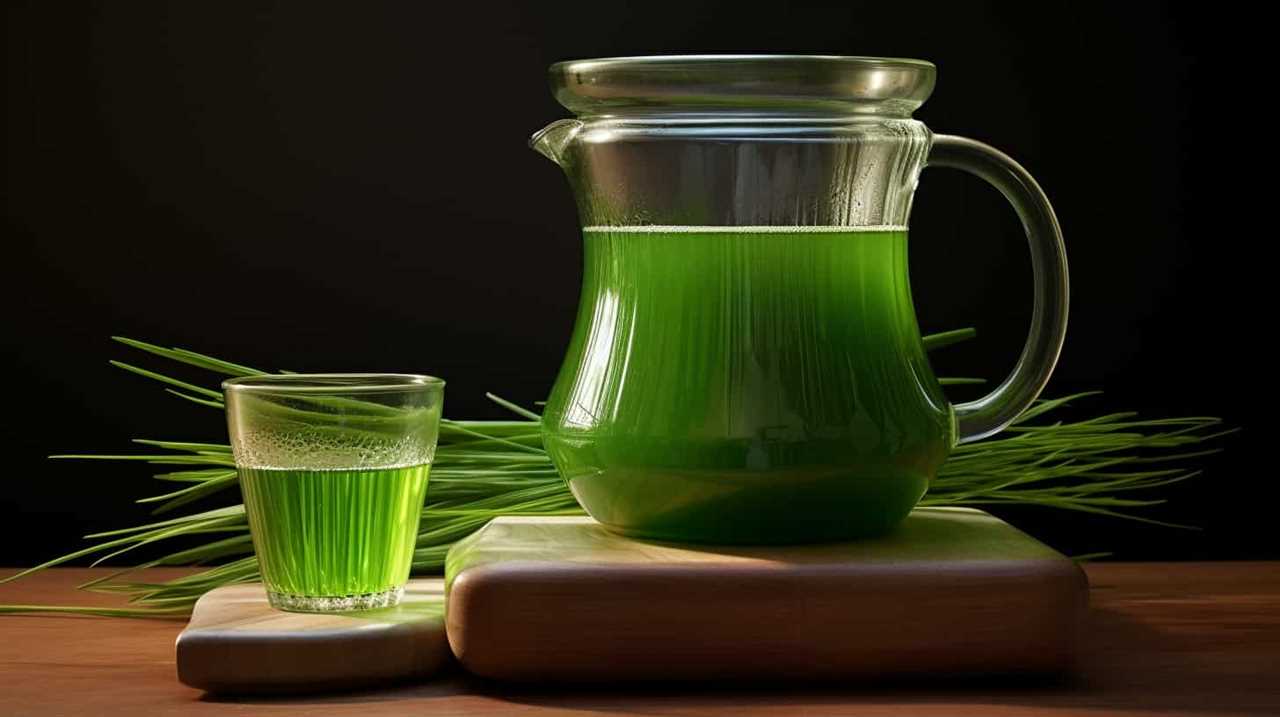
Frequently Asked Questions
Can I Use Fresh Lemons Instead of Bottled Lemon Juice?
Fresh lemons offer numerous benefits over bottled lemon juice. The taste of fresh lemons is unparalleled, providing a vibrant and tangy flavor. Incorporating fresh lemons into your lemonade will elevate its taste and give it a refreshing and authentic twist.
Can I Substitute Sugar With a Different Sweetener?
Substituting sweeteners in lemonade can enhance the flavor and offer health benefits. We’re knowledgeable about alternative sweeteners and can provide precise, detailed instructions on using them in place of sugar.
How Long Does the Lemonade Concentrate Need to Chill in the Refrigerator?
The chilling time for the lemonade concentrate in the refrigerator is typically around 1-2 hours. Using bottled lemon juice offers the benefit of convenience and consistent flavor for a refreshing glass of lemonade.
Can I Add Other Fruits or Flavors to the Lemonade?
Sure, we can definitely add different fruits or flavors to our lemonade. It’s a great way to experiment with unique flavors and create refreshing, personalized drinks. The possibilities are endless!

How Long Does the Lemonade Stay Fresh in the Refrigerator?
Lemonade made with bottled lemon juice can stay fresh in the refrigerator for about 5-7 days. To maximize shelf life, store it in an airtight container and keep it chilled.
Conclusion
And so, with a few simple steps and the right ingredients, a glass of refreshing lemonade is born.
Like a symphony of flavors dancing on your taste buds, this tangy elixir quenches thirst and brings joy on a hot summer day.
Just a sip transports you to a world of citrusy delight, where the sweetness and tartness blend harmoniously.

So go ahead, indulge in the art of lemonade-making and savor every drop of this sun-kissed nectar.
Cheers to the perfect glass of lemonade!
Susannah expertise lies in researching and compiling evidence-based content on juicing, nutrition, and overall health. She is committed to ensuring that The Juicery World offers accurate, up-to-date, and trustworthy information to empower readers to take control of their health. Susannah’s goal is to inspire individuals to embrace juicing as a way to nourish their bodies and live their best lives.
Juice Tips and Tricks
How to Know if Orange Juice Is Bad

We’ve all been in that situation before – reaching for a glass of orange juice and hesitating, unsure if it’s still okay to drink. Fear not! This article will give you the knowledge you need to determine for sure if your orange juice is still fresh or if it’s gone bad.
With a blend of scientific precision and practical tips, we’ll explore color changes, strange smells, off taste, texture changes, and mold or growth that may indicate spoilage.
Let’s dive in and serve ourselves a refreshing glass of certainty!
Key Takeaways
- Color changes in orange juice can indicate a loss of freshness and shelf life extension, but it doesn’t necessarily mean the juice is bad.
- Unusual or off-putting odors in orange juice, such as sour or fermented scents, can be a sign of poor quality.
- An off taste in orange juice, such as sour, bitter, or fermented flavors, suggests that the juice is spoiled.
- Texture changes in orange juice, such as pulp separation or a thicker consistency, can occur as the juice ages, so it’s important to consume it before the expiration date.
Color Changes in Orange Juice
We should be aware that color changes can indicate whether orange juice is bad.

When it comes to orange juice, color is a crucial factor to consider. As oranges are exposed to air, an oxidation process occurs, which leads to changes in color. Fresh orange juice has a vibrant orange hue, indicating its freshness and high nutritional value.
However, as time passes, the juice may undergo a color change, turning dull or brownish. This change in color is a result of the oxidation process, which affects the flavor and quality of the juice. It’s important to note that while a change in color doesn’t necessarily mean the juice is bad, it does indicate that the juice is losing its freshness and shelf life extension.
Therefore, it’s advisable to consume orange juice when it’s at its freshest, as indicated by its vibrant orange color.
Strange Smells in Orange Juice
When it comes to evaluating orange juice, we should be cautious of any strange smells or odors. A fresh, pleasant smell is indicative of good quality orange juice. However, if you notice any unusual or off-putting odors, it may be a sign that the juice has gone bad. These smells can range from a sour or fermented scent to a rancid or moldy aroma.

It’s important to note that while some natural variations in scent can occur due to the specific variety of oranges used, any strong or unpleasant smells should raise concerns. If you have citrus fruit allergies, it’s especially important to pay attention to the smell of orange juice, as it could indicate the presence of spoilage or contamination.
Ensuring the quality of orange juice is essential as it’s a popular beverage known for its health benefits, including being rich in vitamin C and antioxidants.
Off Taste of Orange Juice
Our taste buds can detect even the slightest hint of an off taste in orange juice, which can indicate that it has gone bad. The taste of orange juice should be fresh, tangy, and slightly sweet. If it tastes sour, bitter, or fermented, it’s likely spoiled.
One common cause of an off taste in orange juice is the use of overripe oranges. When oranges become overripe, their flavor profile changes, resulting in a less pleasant taste. Another factor to consider is the expiration date. Orange juice that has passed its expiration date is more likely to develop an off taste. It’s important to check the expiration date before consuming orange juice to ensure its freshness and quality. Additionally, improper storage conditions, such as leaving the juice at room temperature for extended periods, can lead to the development of unpleasant flavors. Storing orange juice in the refrigerator helps maintain its freshness for longer. For those exploring different juice options, aloe vera juice flavor tips suggest pairing tart juices with milder flavors to balance the overall taste.
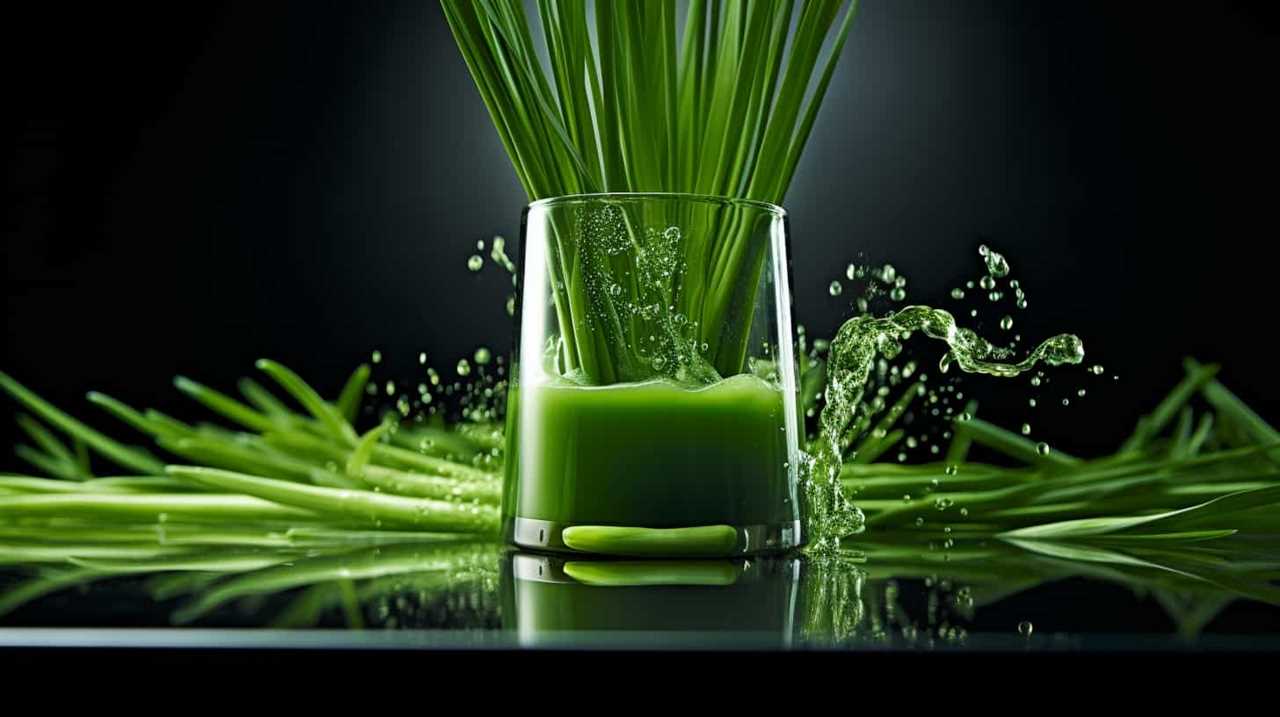
Now, let’s move on to discuss the texture changes in orange juice.
Texture Changes in Orange Juice
As we explore the texture changes in orange juice, it’s important to note that certain factors can cause it to become thicker or develop sediment. One common texture change in orange juice is pulp separation, where the pulp separates from the liquid and settles at the bottom. This can occur naturally over time, as the pulp particles become denser and sink.
Another factor that can affect the texture of orange juice is the expiration date. As orange juice ages, it may start to develop a thicker consistency and even form sediment. This is a result of the natural breakdown of the juice’s components. Therefore, it’s crucial to check the expiration date on orange juice and consume it before it reaches its expiration date to avoid any undesirable texture changes.
Mold or Growth in Orange Juice
We need to be aware of the possibility of mold or other growth occurring in orange juice. Mold can develop in orange juice if it isn’t stored properly or if it has passed its expiration date.

To prevent mold growth, it’s important to follow these steps:
- Store orange juice in the refrigerator at a temperature below 40°F (4°C).
- Check the expiration date on the bottle before consuming. Discard any orange juice that has expired.
- Keep the container tightly sealed to prevent air and moisture from entering, as these can promote mold growth.
Regularly inspecting orange juice for any signs of mold or unusual growth is essential. If you notice any discoloration, a strange odor, or visible mold, it’s best to discard the juice to avoid any potential health risks.
Frequently Asked Questions
Can Orange Juice Go Bad if It’s Stored in the Freezer for Too Long?
Frozen orange juice can potentially lose its nutrients and change its taste if stored in the freezer for too long. It is important to check for signs of spoilage before consuming it.
How Long Can Orange Juice Stay Fresh in the Refrigerator Once It’s Opened?
Once opened, orange juice can stay fresh in the refrigerator for about 7-10 days. To maintain its freshness, store it properly by keeping it tightly sealed and at a consistently cold temperature. If the orange juice develops an off odor, flavor, or appearance, it’s best to discard it to avoid any potential health risks. Factors like exposure to air and varying temperatures can influence how long orange juice lasts, so it’s crucial to handle it with care. Always check the expiration date as a general guide, but remember that proper storage can extend its freshness slightly. Additionally, avoid leaving the orange juice out at room temperature for extended periods, as this can significantly shorten how long orange juice lasts. Freezing the juice can be another option to extend its shelf life, but be aware that this may alter its texture and taste once thawed. By following these precautions, you can ensure your orange juice stays fresh and safe to consume.

Is It Safe to Consume Orange Juice That Has Been Left Out at Room Temperature Overnight?
Left out orange juice may not be safe to drink as it can harbor harmful bacteria. Signs of spoiled orange juice include a sour smell, mold growth, and a change in color or taste.
Can Orange Juice Develop Harmful Bacteria if It’s Past Its Expiration Date but Still Looks and Smells Fine?
Orange juice can cause food poisoning if it develops harmful bacteria, even if it looks and smells fine. Signs of spoiled orange juice include a sour smell, mold growth, and a change in color or taste.
Does the Nutritional Value of Orange Juice Decrease as It Starts to Go Bad?
As orange juice goes bad, its nutritional value decreases. The longer it sits on the shelf, the more nutrients it loses. Signs of spoilage include a sour smell, off taste, and mold growth.
Conclusion
In conclusion, determining if orange juice is bad requires careful observation of color changes, strange smells, off taste, and texture changes. Just like a detective investigating a case, we must rely on our senses to detect any signs of spoilage.

If we detect mold or growth in the orange juice, it’s a clear indication that it’s no longer safe to consume. By remaining vigilant and attuned to these indicators, we can ensure that our orange juice is always fresh and enjoyable.
Susannah expertise lies in researching and compiling evidence-based content on juicing, nutrition, and overall health. She is committed to ensuring that The Juicery World offers accurate, up-to-date, and trustworthy information to empower readers to take control of their health. Susannah’s goal is to inspire individuals to embrace juicing as a way to nourish their bodies and live their best lives.
-

 Vetted2 months ago
Vetted2 months ago15 Best Juices for Diabetics: Refreshing Options That Won’t Spike Your Blood Sugar
-

 Vetted2 months ago
Vetted2 months ago15 Best Decaf Coffee Options for Flavor Lovers Who Need a Caffeine Break
-

 Vetted2 months ago
Vetted2 months ago15 Best Espresso Ground Coffees to Elevate Your Morning Brew
-

 Vetted2 months ago
Vetted2 months ago15 Best K-Cup Coffee Pods for a Perfect Brew Every Time
-

 Vetted2 months ago
Vetted2 months ago15 Best Beans for Espresso: A Guide to Perfecting Your Brew
-

 Vetted2 months ago
Vetted2 months ago15 Best Inexpensive Espresso Machines That Brew Quality Coffee on a Budget
-

 Vetted2 months ago
Vetted2 months ago15 Best Cold Brew Coffees to Keep You Refreshed All Summer Long
-

 Vetted2 months ago
Vetted2 months ago15 Best Kona Coffees to Savor the Rich Flavors of Hawaii



